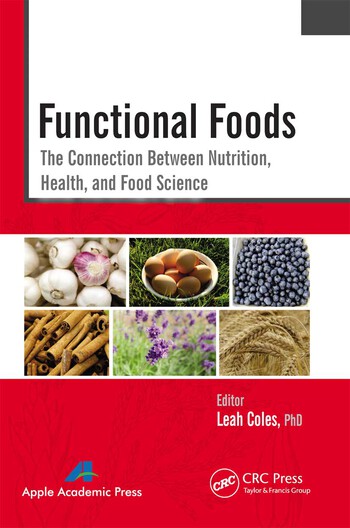Functional Foods R&D Survey
Prepared Foods magazine and NutraSolutions ask readers about trends and challenges in developing functional foods, functional beverages and dietary supplements.
For the 11th year, BNP Media’s Market Research Division, in conjunction with Prepared Foods magazine and NutraSolutions.com, surveyed processors of functional foods, functional beverages and dietary supplements on the issues they confront daily, as they develop the next generation of these products for an increasingly complicated consumer market.
Out of nearly 400 volunteer respondents (drawn from Prepared Foods magazine and NutraSolutions.com readers) with direct involvement in formulating with or specifying ingredients for functional products, a field of 166 survey completers provided information on nutraceutical or nutritional ingredients, as well as their frequently used sources of information on new nutraceutical or nutritional ingredients. They further shared opinions on the importance of various health and wellness issues considered when developing products.
The development of functional products follows the decades-long dichotomy of a pandemic of obesity and concomitant diseases (especially diabetes), with consumers who are increasingly informed on the details of nutraceutical and other functional ingredients and the science behind them. And, although economic upheavals have impacted the market for products using functional ingredients, there’s still strong demand for new, better-for-you products and for reformulated, healthier versions of extant products.
In its “Global Industry Outlook 2014” survey, Leatherhead Food Research discovered: “While new product launches of low-, no- or reduced-ingredient platforms are flatlining, global product launches with functional claims show an uphill trend—it seems consumers see the benefit of products with a specific purpose or function.” Leatherhead estimates the global functional foods market to be at almost $27 billion and as having an average annual growth rate of around 5%.
Better-for-you foods can no longer be thought of as a fad, or anything but mainstream. In this year’s “Functional Foods R&D Survey,” foods and beverages with some health ingredient or aspect were shown to dominate the market, with 63% of companies developing/marketing such products to consumers. More than nine in 10 respondents to the survey stated that the companies for which they work are currently developing and/or marketing functional foods, beverages or dietary supplements for consumers. But, even the remaining group responded that their companies plan to make a product or products that fit the category in the future.
Within this group, from just under one fifth to nearly one quarter noted they specifically are involved in making and/or marketing functional, non-dairy beverages, including energy shots (24%); functional dairy beverages (23%) and dietary supplements (19%). And, 17% are involved in developing nutritional supplements using nutraceuticals, phytochemicals, herbals or botanicals.
Important Health Factors
In determining where to jump into the functional product market, key health concerns loom large. During the next two years, weight management and cardiovascular health will emerge as the two most important issues processors consider when developing foods, beverages and dietary supplements for health. The top four most important health factors in food/beverage/supplement development identified by respondents to the survey are weight management (78%), cardiovascular health (73%), digestive health (71%) and diabetes (69%).
Also figuring large across the disease prevention/anti-aging issues category were reducing cancer risk (65%), immunity (64%), energy/performance (63%) and cognitive health (62%). Although beauty-from-within was deemed to be the least important, more than a quarter of respondents (28%) still ranked it as a significant general well-being issue.
The important ingredients and additives product developers associate with these conditions showed some interesting shifts this year. While survey respondents feel antioxidants (70%), and fruit and vegetable extracts or powders, (68%) will be the two most important ingredients over the next two years, vitamin D—the hormone-like fat-soluble vitamin that has benefited from a flood of new research in the past few years -- topped the list of vitamins of importance.
In total, among the vitamins, the B vitamins (60%), vitamin C (52%), vitamin E (51%) and vitamin K (44%) filled out the top five. Whole grains and seeds, and functional sweeteners fruit and vegetable extracts or powders, ranked at 63% and 62% among general ingredients, respectively. And, reflecting the big burst of interest over the past year in protein from peas, rice and potatoes, non-soy plant proteins entered the top five, with 56% of processors ranking the subcategory as important among the general ingredients for developers.
Dairy protein finished the five top ingredients with 51%. Soy proteins and isoflavones came in at 48%.
The ranking of ingredients and additives separated as “biotic” ingredients included the aforementioned top scorer, antioxidants. These are the ingredients that encompass prebiotics and probiotics, as well as superfruits, botanicals, and algae- or microalgae-derived ingredients.
Of these, prebiotics and dietary fibers followed antioxidants with 63% respondents seeing them as important in the next two years; probiotic bacteria/cultures were immediately behind at 62%. Superfruits came in at 59% and botanicals at 56%.
Although algae-/microalgae-derived ingredients came in behind the others, a surprising 38% of survey takers recognized this newly emerging class of ingredients will indeed be important—beginning in the immediate future. The incredibly versatile, highly sustainable and renewable, eco-friendly organisms are sources of protein, the most-desirable EPA form of omega-3 fatty acids, vitamins and other nutrients.
The survey also looked at the minerals and oils functional product makers find deserving of their interest. In this class, omega oils topped the list at 65%, and minerals came in at number two with 54%. And, apparently, knowledge of the benefits of coenzyme Q-10 (CoQ-10) is finally getting out there. More than 40% of those surveyed think CoQ-10 will be important in the next two years.
Making the Market
Functional product manufacturers recognize that creating foods with a nutraceutical component continues to increase in complexity. Everything from determining which market has growing space to knowing what product to develop or reformulate has to be carefully negotiated.
Then come the logistics of combining function with flavor to attract consumer interest, technical aspects, regulatory issues and sourcing challenges. Then, all must converge in a “perfect storm” to have even a chance at a successful product launch.
As with anything, the process must first start with information, and R&D teams, of course, turn to what they perceive as the best source for that information. By a significant margin, survey respondents turn to ingredient suppliers as both their first source of information and as their key source of information on new nutraceutical or nutritional ingredients. More than a half -- 58% -- identified suppliers as a key source, and nearly one third (30%) consider suppliers as the first source for knowledge.
While 42% see colleagues as sources of key information, only 15% turn first to those sharing the trenches. More than a fifth (22%) look first to trade/business-to-business journal articles, and more than a third (36%) consider them sources of key information. While trade shows are a first source for only 6% of formulators, 29% do hit the show floors for key information. Just under that figure, 27%, consider scientific journals as sources of key information, and 13% turn to those journals first.
A surprising source of key information on new nutraceutical or nutritional ingredients turns out to be supplier ads in trade and business-to-business journals. At nearly a fifth (19%), the figure beats out supervisors and administrative staff as such sources.
This shows increasing recognition of ingredient industry experts as legitimate and involved partners in the product development process.
What Matters
Sharing the specifics of navigating the product development process, developers related what they perceive as the stumbling blocks along the way. Although the majority of respondents claim to feel the information they receive on new nutraceutical or nutritional ingredients is “very accurate” (58%) or even “extremely accurate” (8%), 38% found nutrition and nutraceutical ingredient information to be only “somewhat accurate.” They also cited information bias and lack of scientific support as some of the main barriers to accuracy.
When asked what they think is the most important issue facing developers of new functional foods, beverages, and nutritional supplements, the respondents brought the focus to some standard issues. Mentioned frequently were getting taste and functionality to sync up; the costs of ingredients and marketing; the increasingly crowded field breeding closer and closer competition; and quality of ingredients.
One beverage maker observed, “There’s too much noise in the new markets and consumer confusion, to a certain degree,” adding that a major hindrance is not having “clearly established marketing goals for various niches.” Another pointed to the challenge of “finding the balance between the cost and the benefit of the functional ingredients in a formulation; if the consumer cannot justify the benefits based on the price of the product, then it becomes irrelevant before it even takes off.”
One developer of prepared specialties noted as her primary issue, “Reputable sourcing of the raw materials… having a dependable supply chain and a consistent, safe end-product that enhances the consumers’ life.”
This was an eloquent echo of a recurring theme targeting “misinformation,” “conflict of interest,” “lack of published/relevant/substantiated/reliable/clinical placebo-controlled, double-blind studies.” “Unavailable or misapplied study details” were also mentioned. Noted one product development specialist for a beverage company: “There are not enough clinical studies on some ingredients and very few long-time impact studies.”
These sentiments were seconded by a respondent in R&D, with a little finger-pointing at the communications side of the supply system. “Marketing companies do not tend toward ‘full disclosure and honesty,’ when it might be a barrier to their profit margins; unfortunately, data may be accurately presented, but inaccurately represented, giving a false indication to the industry that is looking for answers and results,” the formulator remarked.
Related to this, several manufacturers mentioned a lack of impact studies of interactions with other ingredients in a typical formulation. They cited an equal lack of information on long-term effects of ingredients. And, as referred to by a developer of dairy products, translating the science of an ingredient to actual product application was yet another significant barrier to a more effective functional-product development process.
Truth in Advertising
Concerns about ingredient information reliability ties in with a more global trend regarding reliability on the safety and quality of the ingredients in the food and beverage manufacturing system, as seen from the consumer point-of-view.
Could this concern for safe, reliable and consistently supplied ingredients be related to the periodic influx of tainted ingredients from China and other sources? Consumer surveys say, “Yes.” Several such surveys investigated all included references to various ingredient scandals and a lack of trust by the end-user for products made with ingredients from other countries, especially Asia.
Supporting data come from Leatherhead Food Research’s spotlight on the supply chain. The research group noted, “Traceability and sustainability criteria of the ingredients which go into companies’ products are becoming ever more important.” Companies are aware that they are in the spotlight and will be held responsible for any negative incidents and no longer will it be “acceptable to plead ignorance.”
As the study authors succinctly put it, “Companies are conscious of the need to understand the operations of their entire supply chain in order to mitigate any risks before they occur and to give them evidence for the good news stories about their products.”
What does this mean for processors of functional foods and beverages? The “Leatherhead Global Outlook Survey” authors noted: “Now, more than at any other time in history, attention is trained on the food and drink industry, and the actions of food and drink companies are being closely watched by regulators, governments and the media.
Regulation is getting stricter regarding product labeling; additives and preservatives are under greater scrutiny; and the food and drink industry is being asked to consider the role it plays in social issues, such as sustainability and rising global obesity levels. All of this is happening under the spotlight of a hungry media looking for the next big scandal.”
Interestingly, fewer respondents complained about regulations this year than last. However, whether or not that means the legal aspects of labeling and marketing functional products has become easier to navigate, or that regulatory information has become clearer and more available, is unknown. Another possibility, of course, is that other problems might be looming large enough to make government red tape pale in comparison.
Thousands of nutrition and health studies are published each year. Surfing this wave of research, creators of new products are constantly assessing what will be the next functional-food home run. As one head of R&D described it, the challenge becomes “…staying on top of the scientific edge; when the current ‘truth’ of nutrition is changing so rapidly to keep up with new findings, it is of paramount importance to understand where on that edge a newly developed product needs to be in order not to come off as a fad.” The same respondent expressed every product developer’s worry of producing a “badly researched product” or ending up with a product that is “behind the times.”
This is no small worry. As one dairy manufacturer pointed out, there’s a big issue right now of “too many products using the same functional ingredients.” [Editor’s note: This was addressed indirectly at Prepared Foods’ annual R&D conference last year in a presentation on so-called “orphan” ingredients {see “Orphans in the Storm,” http://bit.ly/1dlNhKZ}.]
“There are a wide variety of vitamins, minerals, botanicals and nutraceuticals that can be used to fortify foods and beverages,” observes Stuart Cantor, Ph.D. “These are tailored towards certain therapeutic categories, such as bone health, heart health, cognitive health and weight management. And, some foods and beverages are required by law to be enriched with specific nutrients, i.e., milk products, breads, rice and noodle products.”
And, this brings forward the optimism with which functional food developers, as well as ingredient providers, can look to the next few years. By careful assessment and sourcing of new ingredients and techniques, and skillful navigation of a market that, while crowded, is also packed with eager and knowledgeable consumers, processors will have everything they need to create great-tasting, health-enriching foods and beverages and to do so with success. NS
Study Details
At the end of last year (2013), BNP Media’s Market Research Division approached active, qualified subscribers of Prepared Foods magazine who registered their job titles as being R&D, QA/QC, marketing, sales, general management/administration or purchasing-related.
Through a systematic, random sample from the domestic circulation (on an Nth name basis), total completed respondent count ended up at 166. Following the fieldwork, in which the survey was administered on the Web, results were tabulated using SPSS statistical software package.
Resultant data were presented in graphical and tabular format with the number of respondents who answered that particular question. Some questions in the survey were open-ended, requiring a text response. Other than minor editing for typos, grammar and readability, any responses used are presented as entered.
Two thirds (66%) of respondents identified as male and 34% as female. The majority (39%) fell into the 50-59 years age category. The 40-49 years group comprised 22%, 30-39 at 16%, and 11% fell into the 29 and younger group. On the upper end, 7% are between 60-69 years old and 4% are still clocking in after age 70.
When asked to describe their title, 59% of respondents self-identified as working in research & development (president/VP of R&D, food tech, chemist, scientist, chef, project manager, lab tech, etc.); or QA/QC (quality-assurance manager, quality-control manager, QA/QC personnel, etc.). Another 23% declared as being in corporate management and administration (president, owner, partner, vice president, general manager, manager and assistant manager, etc.). Those choosing marketing/sales (category manager, brand manager, product manager, marketing director, marketing manager, etc.) numbered 13%; another 5% identified as being in sales (VP of sales, director of sales, sales manager, etc.).
When asked which types of functional products their company develops or markets to consumers, respondents answered the following (with some companies making multiple products, the total will be greater than 100%):
• Beverages (non-dairy) = 35%
• Foodservice products = 27%
• Baked goods = 26%
• Dietary supplements and bars = 26%
• Sauces, condiments, dressings, dips = 22%
• Beverages (dairy) = 20%
• Seasonings, spices and spice blends, gourmet salts = 20%
• Snacks (sweet) = 18%
• Dairy products (non-beverage) = 17%
• Desserts = 17%
• Organic/Fair trade products = 16%
• Breakfast foods (including hot and cold cereals) = 15%
• Appetizers = 13%
• Snacks (savory) = 13%
• Side dishes = 11%
• Ethnic foods = 10%
• Pet foods = 10%
• Vegetarian dishes (including meat or dairy analogs) = 8%
• Other = 6%
• None/n.a./none of the above = 9%
One quarter (25%) of respondents work for small companies (1-50 employees); 8% for companies with 51-100 employees; 20% are at companies of 101-500 employees; 13% are in companies of 501-1,000; 13% work for companies of 1,001 to 5,000 employees; and 21% are working at companies with more than 5,000 fellow employees. The largest grouping of respondents (37%) work in the Midwest; 28% are located in the South; 18% in the West and 17% in the Northeast.
Looking for a reprint of this article?
From high-res PDFs to custom plaques, order your copy today!





